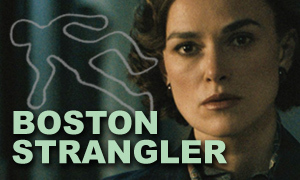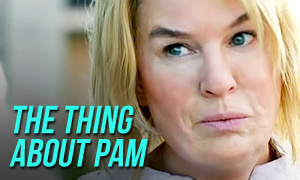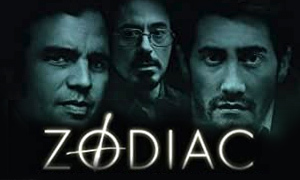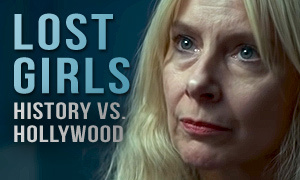Boston Strangler: History vs. Hollywood
Keira Knightley
Born: March 26, 1985
Birthplace:
Teddington, Middlesex, England, UK
Loretta McLaughlin
Born: 1928
Birthplace: Woburn, Massachusetts, USA
Death: November 23, 2018, Milton, Massachusetts, USA
Bio: Reporter who Believed the Murders were Connected
Carrie Coon
Born: January 24, 1981
Birthplace:
Copley, Ohio, USA
Jean Cole
Born: May 13, 1926
Birthplace: Scituate, Massachusetts, USA
Death: August 8, 2015, Great Barrington, Massachusetts, USA
Bio: Reporter who Helped Loretta McLaughlin Investigate the Murders
David Dastmalchian
Born: July 21, 1975
Birthplace:
Philadelphia, Pennsylvania, USA
Albert DeSalvo
Born: September 3, 1931
Birthplace: Chelsea, Massachusetts, USA
Death: November 25, 1973, Walpole State Prison, Massachusetts, USA (stabbing)
Bio: Suspected of Boston Strangler Killings
Greg Vrotsos
Born: July 23, 1984
Birthplace:
Norwood, Massachusetts, USA
George Nassar
Born: June 1932
Bio: Convicted Murderer to whom Albert DeSalvo Confessed
Luke Kirby
Born: June 29, 1978
Birthplace:
Hamilton, Ontario, Canada
F. Lee Bailey
Born: June 10, 1933
Birthplace: Waltham, Massachusetts, USA
Death: June 3, 2021, Atlanta, Georgia, USA
Bio: Albert DeSalvo's Attorney
How many women did the Boston Strangler kill?
The Boston Strangler true story confirms that the serial killer took the lives of 13 women in the Boston area between June 14, 1962 and January 4, 1964. They ranged in age from 19 to 85. As the killer's nickname indicates, nearly all of the victims were strangled to death, usually with their nylon stockings or some other piece of clothing. The Boston Herald dubbed the crimes the "Silk Stalking Murders". Beverly Samans, 26, was the only one who was stabbed to death instead. Her body was found on May 6, 1963 inside her home in Cambridge, Massachusetts. 85-year-old Mary Mullen died from a heart attack when the killer grabbed her. Almost all of the Boston Strangler's victims were sexually assaulted as well, with the possible exception of Mary Mullen.
Did reporter Loretta McLaughlin come up with the nickname "The Boston Strangler"?
Yes. A fact-check reveals that early on, the serial killer was given a few nicknames, including "The Mad Strangler of Boston" and the "Phantom Fiend" or "Phantom Strangler", the latter two being references to the fact that he made it into his victims' apartments with relative ease, with no signs of forced entry. He often did this by posing as some type of repairman, sales associate, or delivery service. In the four-part 1963 series that investigative reporters Loretta McLaughlin and Jean Cole wrote for the Record American (a newspaper that later merged with the Herald Traveler and evolved into the modern-day Boston Herald), McLaughlin dubbed the killer "The Boston Strangler". The name stuck and has since been cemented in the annals of true crime history.
Who was the Boston Strangler's first victim?
In researching how accurate is the Boston Strangler movie on Hulu, we confirmed that while the killer had sexually assaulted numerous women prior to committing the Boston Strangler murders for which he gained notoriety, the first of the 13 women he is known to have killed is 55-year-old Anna Slesers. Her body was discovered on June 14, 1962 in her third-floor apartment on Gainsborough Street in Fenway, Boston. She was strangled with the cord on her blue housecoat after being sexually assaulted with an unknown object.
What did the Boston Strangler do to his victims?
As stated above, the Boston Strangler's victims were often raped, sometimes with foreign objects. Most were strangled to death with their own nylon stockings or pieces of clothing. In the case of the ninth victim, Mary Ann Brown, 69, she was badly beaten in addition to being raped, strangled, and stabbed. 23-year-old Beverly Samans, the Boston Strangler's tenth victim, was stabbed 22 times, four times in the throat and 18 times in her left breast.
While most were strangled with their stockings, the Boston Strangler's first victim, Anna Slesers, was strangled with the cord on her housecoat after being sexually assaulted with an unknown object. It's true that one of the Strangler's hallmarks was to tie the victim's stockings, bra, or scarf in a bow.
Is Chris Cooper's character, newsroom boss Jack MacLaine, based on a real person?
Yes. The true story behind Boston Strangler on Hulu confirms that Loretta McLaughlin's boss in the newsroom, Jack MacLaine (Chris Cooper), is based on a real-life individual who was the city editor of the Record American newspaper. His great-nephew contacted History vs. Hollywood and confirmed this and also pointed out that the correct spelling of his name is "Jack McLean."
When discussing the research he did for his character, actor Chris Cooper did not mention studying the real Jack McLean, likely because there is not very much information on him. Instead, he spoke to Eileen McNamara, a Pulitzer Prize-winning journalist who was employed by the Boston Globe in the 1970s and 1980s, and who had been mentored by Loretta McLaughlin. Eileen directed Cooper to various resources that helped him understand the politics of a 1960s newsroom, including the hierarchy within the paper. -Vital Thrills
Of the male editors in the 1960s newsrooms, Cooper said, "They were terribly dismissive, terribly dismissive of the women journalists." Initially, the movie depicts Cooper's character as being dismissive of Loretta McLaughlin's idea of doing a story on the killings. "These murders, these three murders, these are nobodies," Cooper's MacLaine says in the Hulu movie, to which Loretta McLaughlin (Keira Knightley) replies, "These are the people who read your paper. The working class." While the exchange might seem fictional, it is indeed very close to what the real Jack McLean told Loretta McLaughlin when she approached him in real life.
Loretta described the exchange in an interview for the documentary The Boston Strangler Revisited. "I went up to the city editor at the time, Jack McLean, and said, 'If you didn't have anything else for me to do, I'd really like to take a look at these stranglings.' And he sort of said, 'Why,' he said, 'Loretta?' He said, 'They are nobodies.' And I said, 'That's the whole point. Why should anyone be going around killing women who are nobody?' It just doesn't make sense to me, and I thought it was quite remarkable in a city, Greater Boston, million-and-a-half people or so, to have four elderly women strangled in less than two months seemed to me to be quite remarkable."
Were Loretta McLaughlin and Jean Cole the first journalists to connect the murders and reveal to the public that there was a single killer?
For the most part, yes. Up until that point, many in the police department and media had largely been treating the Boston murders of single women as unrelated homicides. Like in the Hulu Boston Strangler movie, the true story confirms that along with journalist Jean Cole, Loretta McLaughlin investigated and connected the assaults and murders, publicizing them as the work of a single killer that she dubbed "The Boston Strangler". At first, the pair were ridiculed and mocked by police investigators, only later to be proven correct. They wrote a total of 29 consecutive articles about the killer. "There was a genuine terror in the city," McLaughlin said (Born to Kill).
Is Detective Conley based on a real person?
No. In Hulu's Boston Strangler movie, Alessandro Nivola's character, Detective Conley, becomes an ally of Loretta McLaughlin (Keira Knightley) and shares her view that the murders are the work of a single individual (it would be at least another decade before the term 'serial killer' would become popularized in the English-speaking world). Detective Conley is not based on any single real-life individual who worked on the Boston Strangler case. Nivola said that the character is instead an amalgamation of some of the detectives who were willing to talk to Loretta McLaughlin and Jean Cole and consider their input (Vital Thrills).
"Some of the detectives who Alessandro’s character is based after, they were a handful of really forward-thinking detectives who were very open, and they wanted to know what Loretta and Jean were coming up with," said Nivola.
Did reporters Loretta McLaughlin and Jean Cole receive disturbing phone calls?
Yes. According to the Daily Mail, Jean Cole received unsettling phone calls featuring heavy breathing and a hard-to-understand male voice, which prompted her to change her phone number. They admitted that their investigations into the murders "had given both of us nightmares."
"All I knew was that he was out there somewhere," Jean Cole said later, "and pictures of Loretta and me were in thousands of newspapers daily for weeks. I asked myself, 'Did he read newspapers? Do we present a challenge you couldn't resist?'"
"We did 29 consecutive articles on the Boston Strangler, his victims, and again, really looked very deeply into the lives of the victims, into what the police were doing, and again, continued to show this pattern that we were really convinced was real, and I am still convinced that it was real. In fact, later on, the man who was accused of committing the crimes [Albert DeSalvo], told us that he followed our articles, and he was delighted because we were very close to being correct most of the time." -The Boston Strangler Revisited
Who was the last victim of the Boston Strangler?
A Boston Strangler movie fact-check confirms that 19-year-old Mary Anne Sullivan was the Boston Strangler's last victim, as well as his youngest. Her body was found on January 4, 1964 in the apartment in Boston that she had just moved into days earlier. She had been raped and strangled to death. "She was left sitting up in bed, with her legs splayed and with a broomstick shoved up into her vagina," said Loretta McLaughlin (portrayed by Keira Knightley in the Hulu film). The killer left a card leaning against her foot that read "Happy New Year".
How was the Boston Strangler caught?
After the Boston Strangler murders died down, a new criminal threat emerged. A serial rapist was on the loose in the Boston area (he also struck in Connecticut). He was dubbed "The Green Man" for the fact that he wore green workman's clothes during the assaults. "He would tie them up," said Loretta McLaughlin. "He would tie their hands up to the headposts and feet to the footboards, and he would rape them." Four of the Green Man's victims went to the police. -Born to Kill
In 1964, a sketch of the attacker was produced. Police recognized him as being identical to the former Measuring Man, Albert DeSalvo, a resident of Malden Massachusetts who lived at 11 Florence Street Park and had previously served time for sexual assault. DeSalvo was arrested. After his photo was published, a number of other women came forward and identified DeSalvo as their attacker. He was believed to have been guilty of up to 300 sexual assaults. -Born to Kill
Did Albert DeSalvo confess to fellow inmate George Nassar that he was the Boston Strangler?
Yes. In answering the question, "Is Hulu's Boston Strangler movie accurate?", we learned that after DeSalvo was arrested and charged with the Green Man rapes, he met fellow inmate and murderer George Nassar at Bridgewater State Hospital in 1965. DeSalvo told Nassar of his exploits as the Boston Strangler. "He convinced me by the description. He was getting it off his chest," said George Nassar from prison decades later. "[I] was the first person apparently to whom he had really spoken about specifics of each crime" (CBS Boston). Nassar conveyed the information to his lawyer, F. Lee Bailey, who decided to represent DeSalvo as well.
DeSalvo gave a lengthy confession to the police, providing details of the crime scenes that hadn't been released to the public. While there were inconsistencies, the police believed they had the likely suspect. "He laid out chapter and verse things that we thought only the killer could have known," said F. Lee Bailey, DeSalvo's attorney (Born to Kill). As Bailey pointed out in his 1971 book The Defense Never Rests, DeSalvo even got a detail correct that one of the victims got wrong. The victim described the chair in her living room as being brown, but photographic evidence proved DeSalvo was correct when he described the chair as blue.
Did Albert DeSalvo have a troubled childhood?
Yes. While exploring Hulu's Boston Strangler movie fact vs. fiction, we learned that Albert DeSalvo's father, Frank DeSalvo, was an alcoholic who often became extremely violent, abusing his children and Albert's mother, Charlotte. In one instance, he knocked Charlotte's teeth out and bent her fingers back one-by-one until they broke as she lay unconscious with the children watching (Serial Killers and Mass Murderers: Profiles of the World's Most Barbaric Criminals). Frank would also bring home prostitutes and carry out sexual acts with them while his wife and young children were present. According to DeSalvo's attorney, F. Lee Bailey, Albert's father taught him how to break and enter when he was just five years old. "He arranged for Albert to get initiated sexually when he was seven," said Bailey (Born to Kill).
The effects of Albert DeSalvo's home life started to become noticeable when he was still a child. He began torturing animals and it wasn't long before he got in trouble with the law. He was arrested for robbery and battery in 1943 at age 12 after he tried to hold up a cleaners with at least one other boy. That same year, he was sent to the Lyman School for Boys, a reform school. It wasn't exactly an escape from his home life since reform schools were known to be places of ongoing violence. Albert was released in 1944 but ended up back at the Lyman School at age 15 after he stole a motor vehicle.
Had Albert DeSalvo been in the U.S. Army?
The Boston Strangler true story reveals that following his second sentence at the Lyman School for Boys, he joined the U.S. Army. He was stationed in post-war Germany for a time and became a rather good boxer while in the army. He also developed a voracious appetite for sex, supposedly having intercourse with many women. -Born to Kill
Did Albert DeSalvo have a wife and children?
Yes. In conducting our Boston Strangler movie fact-check, we learned that while he was in the U.S. Army and stationed in Germany, Albert DeSalvo met and married a local German girl named Irmgard Beck. When they returned to Fort Dix in New Jersey, he got in trouble with the law in what was a preview of things to come. He posed as a rent collector and entered the home of a 9-year-old girl. He was accused of sexually assaulting her. DeSalvo was charged with debauching the morals of a minor. He pled not guilty and got lucky when the child's mother didn't want her to testify because of potential embarrassment and having to relive the events. The case was dismissed. DeSalvo left the army on an honorable discharge and settled down with his wife and newborn daughter in the Boston area. They would end up having a total of two children, one of whom was handicapped. -Born to Kill
DeSalvo gave others the impression that he was a conscientious family man, and he was reportedly liked by his boss and colleagues where he worked (per Crime Library, his jobs included working as a press operator at American Biltrite Rubber, working in a shipyard, and then as a construction maintenance worker). "He was very well-liked by a lot of people," said his younger brother, Richard. "He'd mingle very easily." DeSalvo had a reputation for being a braggart, a trait that contributed to some people later disbelieving his confession that he was the Strangler.
Prior to the Boston Strangler killings, did Albert DeSalvo sexually assault women by posing as a modeling agent?
Yes. "He started out knocking on the doors of women, and telling them that he was from a modeling agency," said the real Loretta McLaughlin, "and that they were looking for a certain kind of model who looked like the woman, whatever she looked like, who answered the door." After gaining entry, he would ask them to don a leotard so that he could more easily take their measurements. For this, he was dubbed "The Measuring Man". He would then fondle them as he took their measurements and he would proposition them for sex. He was arrested for breaking and entering in 1961 and confessed to being The Measuring Man. DeSalvo was diagnosed as a sociopath, and he spent 11 months in prison. He was originally sentenced to 18 months but got out early for good behavior. Not long after his release, the Boston Strangler killings began. -Born to Kill
Was Albert DeSalvo convicted of the Boston Strangler murders?
No. While examining the Boston Strangler movie fact vs. fiction, we discovered that despite his detailed confession to the Boston Strangler murders, there was no physical evidence at the time to support his claims. It's also true that his attorney, F. Lee Bailey, struck a deal that made DeSalvo's confession to being the Strangler inadmissible in court. DeSalvo was instead tried for unrelated sexual assaults and robberies from when he was known as "The Green Man".
Did Albert DeSalvo's attorney, F. Lee Bailey, try an insanity defense?
Yes. In an effort to get a "not guilty by reason of insanity" verdict at his trial, his attorney, F. Lee Bailey, told the jury about his confession to the Boston Strangler murders. The judge ruled the information inadmissible and DeSalvo was found guilty on 10 counts of indecent assault and armed robbery for crimes that had taken place after the Strangler killings. He was sentenced to life in prison in 1967.
Upset over Albert DeSalvo's sentence (and that his insanity defense failed), F. Lee Bailey responded to the verdict by saying, "My goal was to see the Strangler wind up in a hospital, where doctors could try to find out what made him kill. Society is deprived of a study that might help deter other mass killers who live among us, waiting for the trigger to go off inside them." The real Loretta McLaughlin had a similar response to the sentence. -Crime Library
Is it possible that Albert DeSalvo's fellow inmate, George Nassar, was the Boston Strangler?
There has been considerable speculation that George Nassar was actually the Strangler and that he fed DeSalvo the details of the murders, in part so they could split the reward money and also fulfill DeSalvo's desire for notoriety. Potential book and movie deals could prove lucrative and provide DeSalvo with a way to support his family (this was before the Son of Sam law prevented criminals from profiting off their crimes).
While some have embraced this theory, it doesn't align with what we know about Nassar, especially since his convictions were for murdering two men during different robberies, a shop owner in 1948 and a Texaco station attendant in 1964. He used a gun to commit both murders. He had never been convicted of rape or murdering women. The Strangler's murders, however, did begin not long after Nassar had been paroled and stopped in the months prior to Nassar being arrested for murder again in 1964, so he was a free man at the time of all 13 murders.
Adding more fuel to the theory that Nassar was actually the serial killer and not DeSalvo was the fact that two eyewitnesses who encountered the Boston Strangler, Marcella Lulka and Gertrude Gruen, both felt that George Nassar resembled the man they encountered, not DeSalvo. Marcella Lulka met the Strangler face-to-face when he showed up at her door, telling her he was "Mr. Thompson" and had come to paint her apartment. She got him to leave by telling him that her husband was asleep inside. Lulka's encounter was just prior to the murder of Sophie Clark, who lived in the same building. As for eyewitness Gertrude Gruen, she was one of the only women to survive an attack by the Strangler. She fought him off as he attempted to strangle her. He fled when her screams attracted workers on the roof, who began to peer into her windows.
After Albert DeSalvo started confessing, the two women were rounded up and taken to the prison. They posed as visitors in order to get a close view of DeSalvo in the prison's visiting area. They were instead shocked by the site of DeSalvo's friend, George Nassar, who they felt far more closely resembled the man they had encountered, but neither woman was positive. "My deep feelings are that he had very great similarities to the man who was in my apartment," said Gertrude Gruen. Marcella Lulka felt that Nassar was a match for all but one aspect, his hair. It was black and her mysterious caller had honey-colored hair. Could he have dyed it? -Crime Library
Decades later, George Nassar was interviewed from prison and he was asked if he was the real Boston Strangler. "Of course not," replied Nassar. "If I had been, theoretically, on the score with Al, we were in criminal conspiracy together, and I found out that he was murdering women and getting away with it, I'd have given him a quick and painless death, right there." Nassar said he has no doubt that DeSalvo was the Stranger. "Oh yeah, positively, it's him." -CBS Boston
Did Albert DeSalvo escape from prison?
Yes. A Boston Strangler fact-check confirms that in February 1967, the same year he was convicted, Albert DeSalvo and two other inmates escaped from Bridgewater State Hospital, a facility for the criminally insane. A massive manhunt ensued, with DeSalvo giving himself up approximately 36 hours later in Lynn, Massachusetts after trying to disguise himself as a U.S. Navy Petty Officer Third Class (pictured below, left). He was then transferred to Walpole State Prison, a maximum security facility.
Did Albert DeSalvo recant his confession to being the Boston Strangler?
Yes. In answering the question, "How accurate is the Boston Strangler movie on Hulu?" we discovered that after being rearrested following his escape, he was sent to Walpole, a maximum security prison. He later recanted his confession that he was the killer of the Boston Strangler victims.
Is suspect Daniel Marsh based on a real person?
In the Hulu movie, Daniel Marsh (Ryan Winkles) is an unstable former Harvard student who harasses his ex-girlfriend, Beverly Samans, prior to her winding up dead at the hands of the Boston Strangler. While the character is based on an actual suspect, the name Daniel Marsh is fictional. The real person's name was never made public. In the past, he has been referred to by the pseudonym "David Parker." While he had a history of domestic abuse, he was never physically linked to the murders. It is true that he moved from Boston to the Ypsilanti/Ann Arbor area of Michigan and was present there when copycat murders took place. However, the movie condenses the timeline. The actual copycat murders didn't happen until several years later, between 1967 and 1969. A different suspect, Michigan University Student John Norman Collins, was convicted for one of the Michigan Murders, and he was suspected in most of the others. -Decider
The day before he was killed, did Albert DeSalvo contact Loretta McLaughlin and tell her he wanted to talk?
No. While it's true that DeSalvo had indicated he had something big he wanted to reveal, it wasn't Loretta McLaughlin with whom he wanted to speak. Here again, the movie exaggerates McLaughlin's involvement. It also condenses the timeline. In real life, DeSalvo expressed that he had something big to tell psychiatrist Dr. Ames Robey prior to being killed at Walpole State Prison in 1973.
How did the Boston Strangler die?
Approximately six years after he arrived at Walpole State Prison, Albert DeSalvo, aka the Boston Strangler, was stabbed to death in the prison's infirmary on November 25, 1973. He was 42. In trying to discover who killed the Boston Strangler, we learned that two inmates, Robert Wilson and Richard Devlin, were tried twice for Albert DeSalvo's murder. Wilson had been a reported associate of James "Whitey" Bulger's Winter Hill Gang. Both trials concluded with hung juries. DeSalvo's lawyer, F. Lee Bailey, later claimed that DeSalvo was killed for undercutting the inmate-enforced syndicate price for amphetamines inside the prison. Another inmate, Carmen Gagliardi, was part of the first trial, but he died in his cell of a heroin overdose that was ruled a homicide. -The New York Times
Did Boston Strangler DNA evidence link Albert DeSalvo to the murders?
Yes. It's true that for years there were doubts about DeSalvo being the Boston Strangler. Some of the people who knew DeSalvo didn't believe he was capable of such acts of violence. There were also doubts that the murders were all committed by the same person given that there was not a universally consistent modus operandi when it came to the victims and the method by which they were killed. The women ranged in age from 19 to 85 and were from varying ethnic groups. Experts, including at least two FBI profilers, felt that it was not likely that DeSalvo was the Boston Strangler. Some felt that he wanted recognition for the murders but doubted he actually committed them. It was later pointed out that in DeSalvo's confessions, he got the time of death wrong in several of the murders.
In 2000, former journalist and attorney Elaine Sharp set out to help clear Albert DeSalvo's name, a cause supported by the DeSalvo family and the family of Mary Sullivan, the Boston Strangler's last victim. Sharp helped arrange the exhumations of the bodies of Albert DeSalvo and Mary Sullivan and filed several lawsuits to obtain trace evidence, specifically DNA, from the government. Albert DeSalvo's body was exhumed in October 2001, Sullivan's the year prior. Mary Sullivan's autopsy report contradicted DeSalvo's claim that he had strangled her with his hands. Then, when more than a dozen forensic experts carried out the autopsy on the nearly 30-year-old body of DeSalvo, specifically to collect DNA samples, they did not discover a match with DNA evidence taken from Mary Sullivan's body.
More than a decade later in 2013, Albert DeSalvo's body was exhumed a second time by investigators after DNA from DeSalvo's nephew (collected in secret from a discarded water bottle) was compared to DNA in semen collected at the scene of Mary Sullivan's rape and murder. The results produced a match with Albert DeSalvo that excluded 99.9% of suspects. DNA from Albert DeSalvo's femur and some of his teeth was used for testing and confirmed a match. On July 19, 2013, Massachusetts Attorney General Martha Coakley announced that the comparison of DNA evidence from the crime scene to Albert DeSalvo's DNA "leaves no doubt that Albert DeSalvo was responsible for the brutal murder of Mary Sullivan". The odds that the semen at the crime scene belonged to someone other than DeSalvo were 1 in 220bn. Coakley said that it was "most likely" that DeSalvo was the Boston Strangler. -The Guardian
Still, despite the DNA evidence linking DeSalvo to the murder of Mary Sullivan, there is still debate as to which of the other Boston Strangler murders he actually committed.
Did the real Loretta McLaughlin believe that Albert DeSalvo was the Boston Strangler?
Yes. "[Investigators] would take him through, crime by crime, and have him describe exactly what had happened," recalled McLaughlin, "and this went on for a number of days, and DeSalvo could describe each apartment. He drew a picture of some of the apartments. He described carvings on a headboard. He could tell you what a woman had had on her bureau, or what was in a Giro drawer."
McLaughlin continued, "The killer, I am convinced, was Albert DeSalvo, no question. If you wanted to say that, you know, someone could have been training to become the Boston Strangler, it was Albert DeSalvo." -The Boston Strangler Revisited
What became of Loretta McLaughlin and Jean Cole?
Following her investigation and reporting on the Boston Strangler in the early 1960s for the Record American, Loretta McLaughlin eventually took a job as a science writer for Harvard University. She briefly left journalism but returned as a medical reporter for the Herald American in the 1970s. She was recruited by the Boston Globe in 1976 to work as a medical news expert. She focused much of her work on covering the AIDS crisis. Deviations from that focus included a 1982 book about the evolution of the birth control pill, titled The Pill, John Rock, and the Church: The Biography of a Revolution. McLaughlin joined the staff of the Editorial Page of the Globe, and in July 1992, she became the second woman in the history of the paper to be named editor of the Editorial Page, a position she held until 1994.
As for Jean Cole (married name Jean Harris), she would go on to write for the Boston Herald American from 1972 until she retired in 1981, mainly focusing on investigative reporting. Prior to working with Loretta McLaughlin on the Boston Strangler case, she had already made a name for herself by going undercover as a nurse's aide to expose the need to improve the care of the elderly in the state's nursing homes. She was the wife of Frank P. Harris, a reporter for the Boston Globe for more than thirty years.
Largely overlooked by history in relation to the Boston Strangler case, neither woman is still alive to see their accomplishments recognized in the Hulu film. Jean Cole passed away in 2015 and McLaughlin died in 2018.
Is the Boston Strangler case still open?
Yes. The case had been reopened by police in 1999 in the hope that DNA technology could help solve the crimes. While DNA was able to solve Mary Sullivan's murder and close her case, police have yet to prove that Albert DeSalvo was responsible for the other murders as well. At the time of the release of Hulu's Boston Strangler movie, the case was still officially open.







